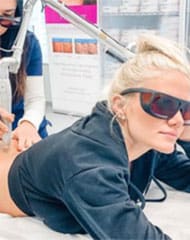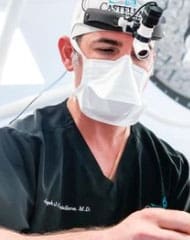 Tummy tuck: it is a term we have all heard, usually in reference to how celebrities manage to bounce back so well after having children. But most of us don’t know all that much about this procedure. Before you jump into the process of getting your own abdominoplasty, here are some key facts about tummy tucks you need to know.
Tummy tuck: it is a term we have all heard, usually in reference to how celebrities manage to bounce back so well after having children. But most of us don’t know all that much about this procedure. Before you jump into the process of getting your own abdominoplasty, here are some key facts about tummy tucks you need to know.
-
Tummy Tuck Is an Umbrella Term
When you discuss getting a tummy tuck with a cosmetic surgeon, they aren’t thinking of one specific procedure, but rather an umbrella term that encompasses multiple types of tummy tuck surgeries.
The first type is the traditional tummy tuck. This surgery is designed to address concerns related to the upper and lower abdomen, allowing for removal of excess skin and fat while also repairing the muscles. In nearly all cases, this also requires designing a new belly button as well.
Then there is the mini tummy tuck. This type of tummy tuck is designed to treat skin that sags and hangs in the lower abdominal area. Skin and fatty tissue are removed, eliminating laxity and bulges. In most cases, the muscles are not treated.
The Avelar tummy tuck is a twist on the traditional tummy tuck. The Avelar technique combines liposuction and abdominal repair into a simple procedure. It relies on smaller incisions and does not require the use of drains after surgery.
Finally, there is the extended or 360-degree tummy tuck. With this procedure, the entire midsection is revised, including the back and sides, reaching from the top of the abdomen and extending down to the thighs. This is usually only done for patients who have experienced significant weight loss, such as after bariatric surgery.
-
Recovery Takes Time
When compared to other cosmetic surgeries, tummy tucks come with one of the longest recovery periods. While an Avelar tummy tuck can make this period easier and more comfortable, most forms of abdominoplasty will require you to take it easy for at least two weeks. The most difficult days are those directly after surgery, as you will be sore and swollen.
Anyone getting a tummy tuck should schedule help during the first week, especially if there are children or pets in the home. It is important that people follow their doctor’s orders strictly, as an injury could not just delay healing, but pose real dangers to the patient.
-
Don’t Expect to Rely on Insurance
Another aspect you need to know about tummy tucks is that insurance doesn’t always offer coverage, and when it does, it typically isn’t for the entire procedure. Certain factors might qualify for coverage, such as repairing damaged muscles or removing skin that causes painful rashes and infections from rubbing. However, this isn’t guaranteed.
With the cost of a tummy tuck typically falling in the $6,000-$12,000 range, this means the patient has a lot they need to save up for. If your tummy tuck surgery is not covered by insurance, ask the practice if they offer financing options. Many cosmetic surgeons offer financing through third-party lenders.
-
Healing Can Take 9 to 12 Months
You already know the tummy tuck recovery period is a marathon, not a sprint. But what you might not realize is how long full healing takes. After six weeks, the results of your tummy tuck should be clear enough for you and your cosmetic surgeon to assess accurately, but this is not the final result.
Residual swelling may linger for up to 12 months, and you may also experience numbness and tingling during this time as the nerves heal. There is also the incision site, which needs time to heal, scar over and lose some or all of its redness.
In other words, while you will no doubt know how happy you are with your tummy tuck after just six weeks, you won’t enjoy its full benefits for roughly a year.
5. Working with an Expert Delivers the Best Results
There are plenty of cosmetic surgeons who offer tummy tucks, but not all are experts in them. You want to work with a surgeon who has performed plenty of abdominoplasties in their career and who looks at them as not just functional, but for cosmetic.
Look at before and after photos and reviews before you settle on a surgeon for your procedure. Also, make sure they give you targeted feedback on your expectations, not just saying yes at every turn.
Related Posts












